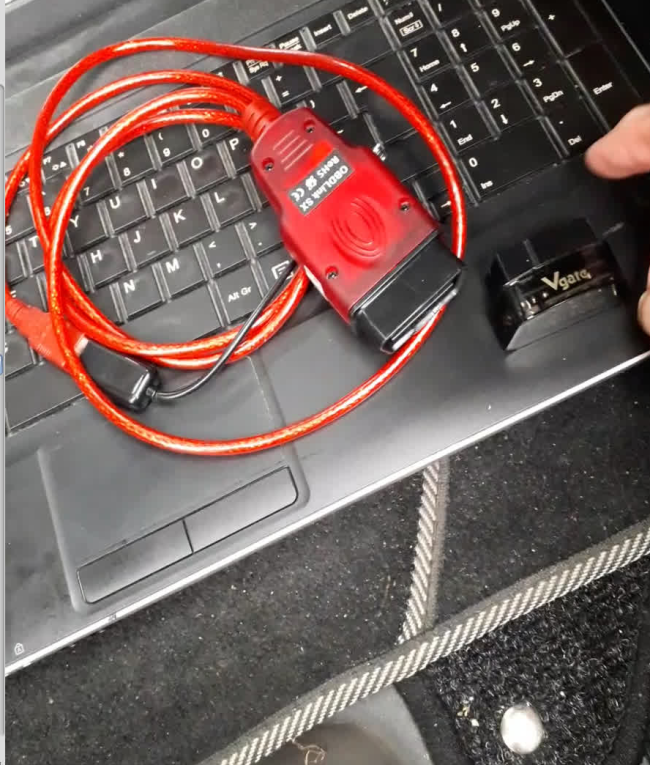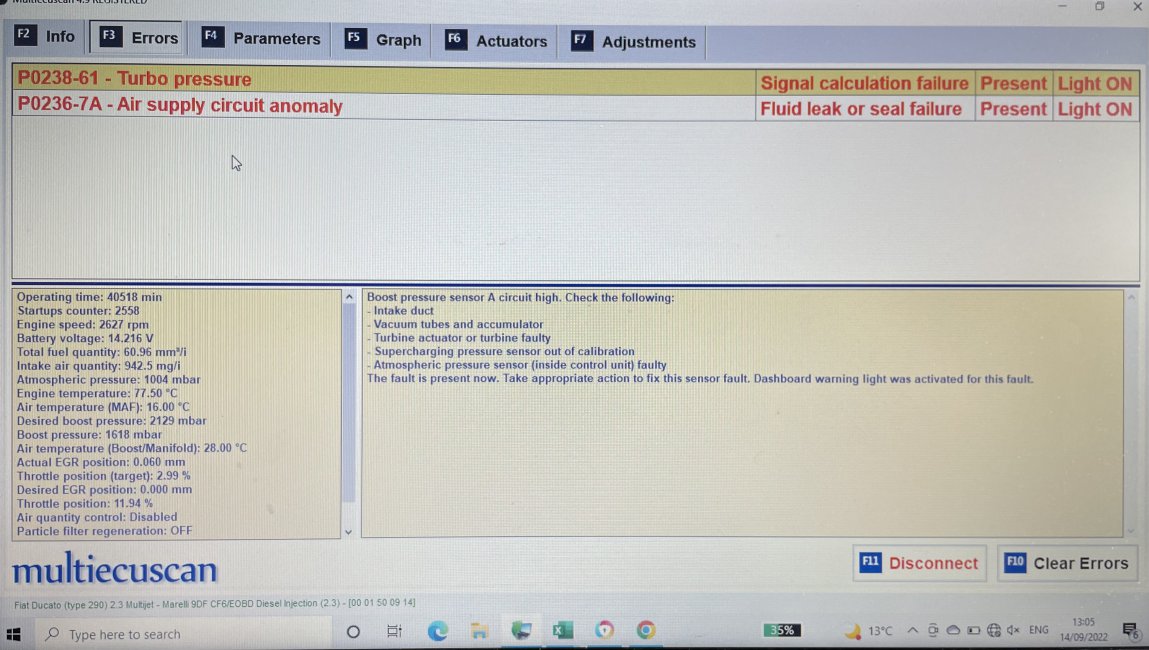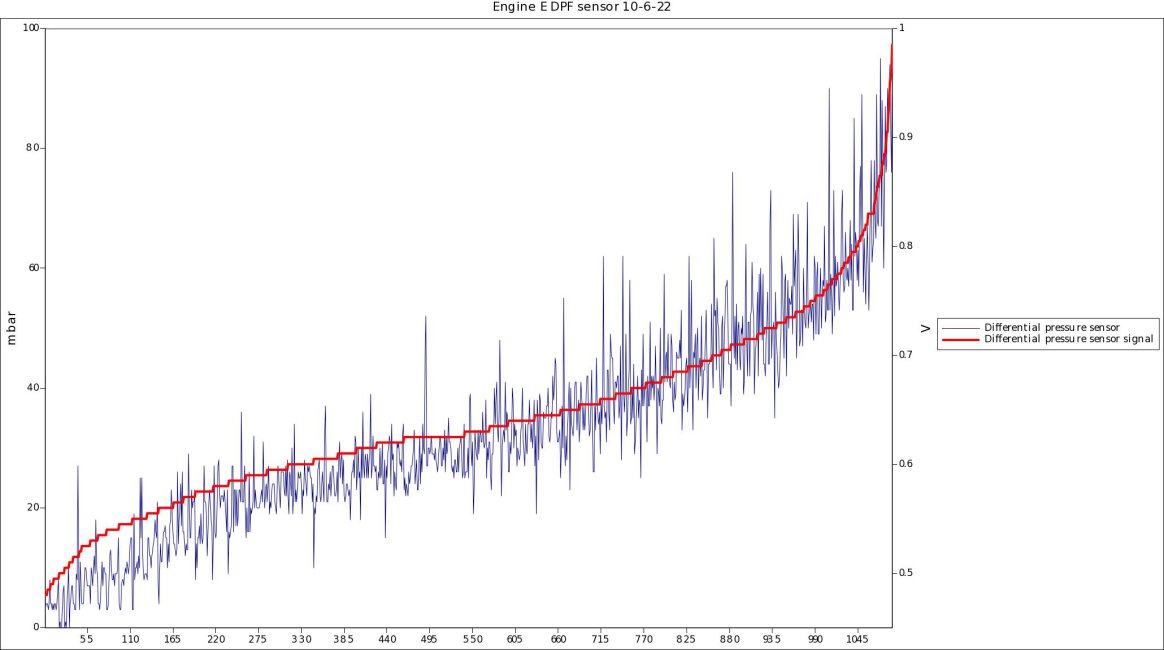Right o an explanation
for first paqrt i wrote this last year
How to diagnose a problem the DPF Differential Pressure sensor and its impact on the DPF. known in
mes parameter list as Differential Pressure Sensor. These sensors are prone to any debris or condensation in the exhaust, which can cause the...

www.fiatforum.com
What is an acceptable figure for DPF Differential Pressure (measured in mbar)? The answer is as little as possible. But if it flatlines at zero its dead.
Adding back pressure will make the engine work harder, and use more fuel to deliver the same power.
<20 Brilliant DPF causing almost no restriction
20-99 Good result and typical of a DPF in good working order
100-250 DPF causing up to 0.25 BAR of pressure – needs investigation
250-500 Serious restriction probably not allowing car to do a Forced Regen
500-1000 Performance loss very marked at this level
>1000 Car can’t pull the proverbial skin off a rice pudding. All your boost is stuck in the DPF example graphs are in the guide.
for the LPEGR some more examples are in
This does not refer to earlier single EGR systems or to later AdBlu SCR engines. Note this is a guide and not definative. It is up to you to make decissions. It is the result of my investigations of data from many contributors and discussion with...

www.fiatforum.com
View attachment 429237
I tend to use the same scale on the Y axes to make comparisson easier.
The green line at 4.7 is what i perceived to be the maximum opening of the valve. Some of the poorly examples jump between 4.7 and zero. I have examined data for over 15 engines and would be to have a look at more including well running examples. The value of cooler temperature does vary from van to van as well as condition. A Max value of good engines can be 140 to 160. The mean value i use is the mean of a warm engine. I have examples of A road variability and 60mph Motor way runs.
The valve of a properly running engine can vary from mid positions 1-3mm as well as max to min
The above is a interesting example as it shows normal valve movement and is not yet throwing a 401 . Good examples have a mean over 100 and maximums over 120. But the DPF is close to not being able to regen. The kitchen paper test shows the DPF is cracked or melted.
@CheeseMonster is that sufficient explanation no i've just thought of something.
Why does the cooler exist
View attachment 429244
Combustion gases are recirculated into the induction cycle and need to have temperature reduced from the 3-600 degrees in the exhaust. Why is it controlled in the 100-140C region?
That's enough for now.




